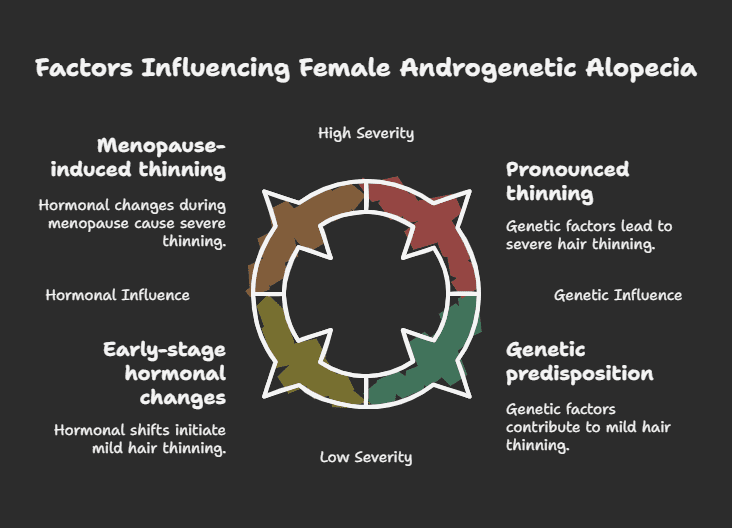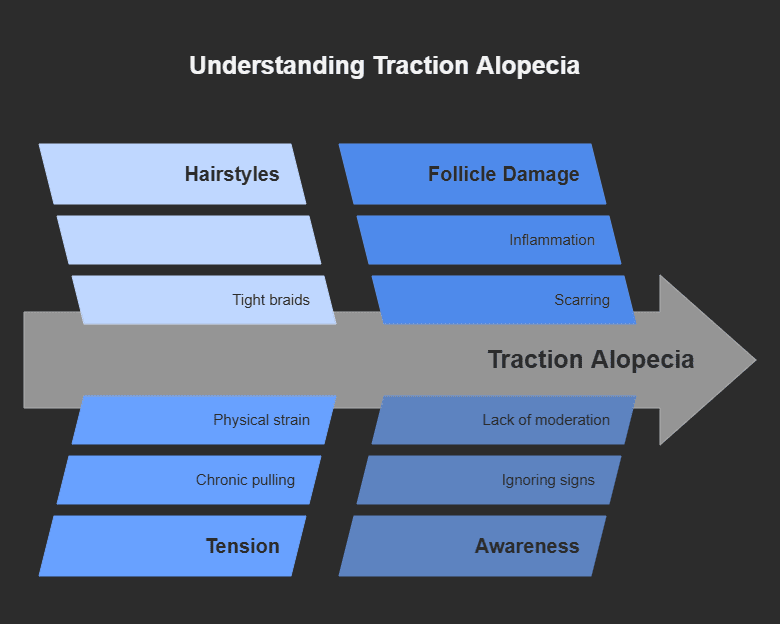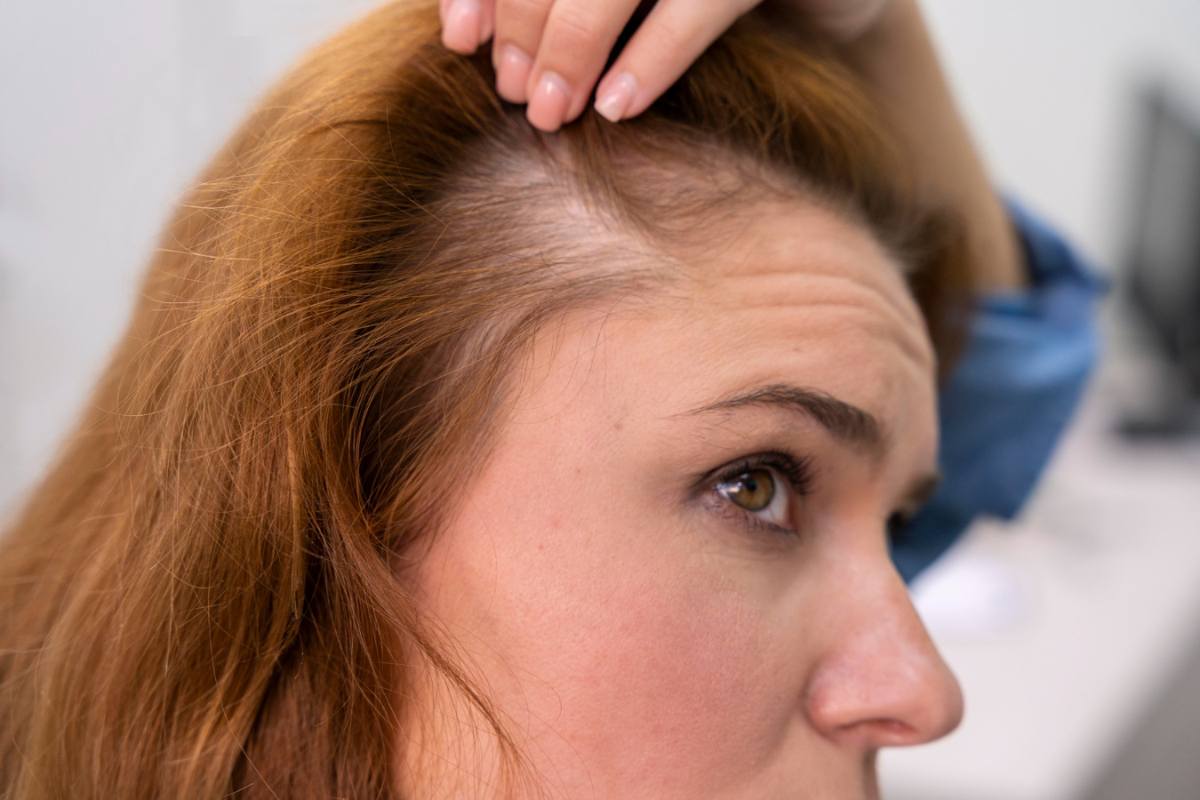That quiet, creeping dread when you notice your part line seems a little wider. The jolt in your stomach when you see a clump of hair swirling at the bottom of the shower drain, a clump that feels… significant. More than usual. The way your heart sinks when you look at old photos and realize, wow, things have changed up there.
It’s a lonely feeling. And a frustrating one.
If you’re reading this, chances are you’re living some version of that story. You’ve probably spent hours, maybe in the dead of night, staring into the mirror, analyzing your scalp from angles you never knew existed. You’ve typed frantic questions into a search bar, hoping for an answer, a solution, a magic bullet. Anything.
And what do you usually find? Cold, clinical articles that sound like they were written by robots. Or, on the other end of the spectrum, sketchy websites promising miracle cures that just feel… off.
So let’s just stop. Take a breath.
I want to talk to you, human to human. Because hair loss, or alopecia, to give it its proper name, is more than just a physical condition. It’s an emotional journey. It can mess with your self-esteem, your identity, and the way you present yourself to the world. And believe it or not, just understanding what’s happening is the first, most powerful step you can take. It’s about taking back control.
Because here’s the kicker: “hair loss” isn’t one single thing. It’s a catch-all term for a whole bunch of different conditions. And your path forward, your story, depends entirely on which type of alopecia has decided to show up at your door.
So, grab a cup of tea. Get comfortable. Let’s peel back the layers and get to the bottom of this, together. We’re not going to beat around the bush. We’re going to look at the main players in the world of hair loss, and we’re going to do it in plain English.
The Big One: Androgenetic Alopecia (The Slow Fade)
Alright, let’s start with the most common culprit by a long shot. The one most people think of when they hear “baldness.” This is Androgenetic Alopecia.
Sounds complicated, right? It’s not. Let’s break it down.
“Andro” refers to androgens, which are male hormones (like testosterone) that everyone has, regardless of gender. And “genetic,” well, that one’s pretty self-explanatory. It’s in your DNA. This is the hair loss that runs in the family. Thanks, Mom and Dad.
Funny thing is, it doesn’t present the same way for everyone.
For the Fellas (Male Pattern Baldness):
You know the script. It’s practically a cultural trope. It usually starts with a little bit of recession at the temples, creating that classic “M” shape. Or maybe it begins at the crown, the vertex, with a thinning spot that you can only see when you hold up a second mirror (a moment of true horror for many).
For some guys, it’s one or the other. For many, it’s both, and they eventually meet in the middle, leaving that familiar horseshoe pattern of hair around the sides and back of the head.
What’s going on here? Well, it’s all about a pesky little hormone called Dihydrotestosterone, or DHT. Your body naturally converts a certain amount of testosterone into DHT. For guys genetically predisposed to hair loss, the hair follicles on their scalp are hypersensitive to this stuff. DHT latches onto these follicles and, over time, shrinks them. It’s a process called miniaturization.
Think of it like a healthy, thriving oak tree slowly being starved of water and nutrients until it becomes a tiny, weak little bonsai sprout. The hair that grows from these shrunken follicles becomes finer, shorter, and wispier… until eventually, the follicle just gives up and stops producing hair altogether. It’s a slow, progressive fade. Not an overnight shock, but a gradual retreat.
For the Ladies (Female Pattern Hair Loss):

Now, for women, the story is a bit different. While some women might see some recession at the hairline, it’s far less common. For women, Androgenetic Alopecia usually looks like diffuse thinning, primarily over the top and crown of the scalp.
You might first notice that your ponytail feels less substantial. Or, the classic sign: your part line starts looking wider. It’s often described as the “Christmas tree” pattern, a widening part that spreads out from the center of the scalp. Unlike with men, it’s incredibly rare for women to go completely bald from this condition. But the thinning can become quite pronounced, and honestly, the emotional toll can be just as severe, if not more so.
The underlying mechanism is similar; that pesky DHT is still involved, but it’s more complex in women. Hormonal shifts during menopause, for example, can often kickstart or accelerate the process. The balance between female and male hormones changes, and those sensitive follicles suddenly find themselves under attack.
The bottom line for Androgenetic Alopecia? It’s genetic, it’s hormonal, and it’s progressive. But the good news? It’s also the type of hair loss with the most FDA-approved treatments available. So, getting a proper diagnosis here is key.
The Surprise Attack: Alopecia Areata (The Patchy Intruder)
Let’s switch gears completely.
Imagine you’re just going about your day. You’re brushing your hair, or maybe a friend or hairdresser points it out, and then you see it. A perfectly smooth, coin-sized patch of bare skin on your scalp.
No rash. No pain. No warning. Just… gone.
This is Alopecia Areata. And it is a whole different ballgame.
This isn’t about shrinking follicles or genetics in the traditional sense. This is an autoimmune condition. If you want to get technical, your immune system, the very thing that’s supposed to protect you from illness, gets its wires crossed. It mistakenly identifies your hair follicles as foreign invaders, like a virus or bacteria, and launches an all-out assault.
Think of it like friendly fire. Your body’s defense soldiers start attacking your hair-making factories. The good news? The attack is usually on the follicle, not the stem cells that create the follicle. This means the follicle isn’t destroyed, it’s just suppressed. It has the potential to wake up again.
Alopecia Areata is wildly unpredictable.
- Alopecia Areata: The most common form, with one or more of those quarter-sized bald patches.
- Alopecia Totalis: In some cases, the condition progresses, and the person loses all the hair on their scalp.
- Alopecia Universalis: This is the rarest form, where the hair loss extends to the entire body. Eyebrows, eyelashes, arm, leg, and chest hair… everything.
Who gets it? Anyone. It can strike at any age, any gender, any ethnicity. It often first appears in childhood or young adulthood. And the triggers? Well, that’s the million-dollar question. Sometimes it’s linked to severe stress or a traumatic event, but for many people, it happens for no discernible reason at all. It just… appears.
The emotional impact of Areata can be profound. The sheer unpredictability of it, will the patch get bigger? Will I get more? Will my hair grow back? Will it fall out again?, is a heavy burden to carry. It can feel like your body has betrayed you. If you’re experiencing this, know that your feelings are completely valid. This isn’t just “hair”; it’s a condition that can turn your world upside down overnight.
The Great Shed: Telogen Effluvium (The Stress Response)
Have you ever been through something… big? A major surgery, a serious illness (especially with a high fever), giving birth, a period of intense psychological stress, or even a drastic change in diet or rapid weight loss?
And then, maybe two or three months after the event, you experience something terrifying. Your hair starts falling out. Not just a little extra shedding. We’re talking handfuls. You run your hands through your hair, and it just comes away. Your brush is full after a few strokes. The shower drain looks like a horror movie.
This, my friend, is most likely Telogen Effluvium. And if I’m being honest, while it’s incredibly distressing, it’s a sign that your body is working correctly, in a weird way.
Here’s a quick-and-dirty breakdown of your hair’s life cycle:
- Anagen Phase (The Growing Phase): Most of your hair (like 85-90%) is in this phase right now. It’s actively growing. This can last for years.
- Catagen Phase (The Transition Phase): A brief, 2-3 week phase where the hair follicle shrinks and detaches from its blood supply.
- Telogen Phase (The Resting Phase): This is where the hair just hangs out for a few months, not growing, before it eventually sheds. Normally, only about 10-15% of your hairs are in this phase at any given time, which is why we all shed about 50-100 hairs a day without even noticing.
Now, when your body goes through a major shock (physical or emotional), it hits a giant panic button. It decides, “Whoa, we have bigger fish to fry than making hair right now! We need to divert all resources to healing and survival!”
As a result, a huge number of your hairs that were happily growing in the anagen phase are prematurely shocked into the telogen (resting) phase. They all get the signal at once. Then, they hang out there for about three months, and after that… they all shed. At the same time.
It’s a massive, synchronized exodus.
The shock of seeing so much hair fall out at once often causes people to panic, which (and this is the cruel irony) can create more stress, potentially prolonging the issue. But here’s the most important thing to know about Telogen Effluvium: in most cases, it is temporary. Once the initial trigger is gone and your body finds its equilibrium again, the cycle resets. The shedding slows down, and the hair almost always grows back. It takes time, and patience is an absolute virtue here, but it’s a recovery story more often than not.
The Style Strain: Traction Alopecia (The Pulling Problem)

We all want to express ourselves. And for many, hairstyles are a huge part of that. Tight braids, sleek high ponytails, heavy extensions, intricate weaves. They can look incredible. They can be a part of your culture, your identity, your brand.
But… there can be a dark side to all that tension.
This is where Traction Alopecia comes into the picture. The name says it all: “traction” as in pulling. When your hair is constantly pulled tight in the same direction for long periods, it puts a tremendous amount of physical strain on the hair follicles.
At first, you might just notice some little bumps around the hairline, or a bit of tenderness after you take your hair down. But over time, this chronic pulling can yank the hair out of the follicle. Even worse, it can cause inflammation and damage the follicle permanently.
This isn’t an internal, hormonal, or autoimmune issue. This is a mechanical one. It’s caused by an external force. You’ll typically see it along the hairline, behind the ears, or at the nape
of the neck, wherever the pulling is most intense. Think of ballerinas with their tight buns, or people who wear tight cornrows or dreadlocks for years.
The crucial thing about Traction Alopecia is that in its early stages, it’s completely reversible. If you stop the hairstyle that’s causing the strain, the follicles can recover, and the hair will grow back. Give your hair a break! Wear looser styles. Let it breathe.
But, and this is a big but, if you ignore the signs and continue with the same high-tension styles for years and years, you can cause irreversible damage. The follicles can become so scarred and damaged that they can no longer produce hair. At that point, the hair loss is permanent.
This is a tough one, because it’s so tied to our appearance and cultural practices. No one is telling you to never rock a snatched ponytail again. But it’s about moderation. It’s about being mindful of the tension. It’s about listening to your scalp when it tells you it’s had enough.
The Tough Stuff: Scarring Alopecias (When It’s Permanent)
Okay, let’s take a deep breath. We’re wading into some heavier territory now, but it’s important.
All the types of alopecia we’ve talked about so far are non-scarring. This means that even though the hair has fallen out, the hair follicle itself, the little factory under the skin, is still there. It might be shrunken, dormant, or under attack, but it still exists and has the potential to produce hair again.
Scarring Alopecias, also known as Cicatricial (sik-uh-TRISH-ul) Alopecias, are different.
In this group of rare disorders, the hair follicle is destroyed by inflammation and replaced with scar tissue. And once that follicle is gone… It’s gone for good. The hair loss is permanent.
This isn’t one condition; it’s a whole family of them, with names you’ve likely never heard of, like Lichen Planopilaris, Frontal Fibrosing Alopecia (FFA), or Central Centrifugal Cicatricial Alopecia (CCCA).
The cause is often inflammation deep in the scalp, but what triggers that inflammation is still a big area of research. The symptoms can vary. You might experience itching, burning, or pain on your scalp along with the hair loss. The skin in the affected area might look shiny, smooth, or scarred.
Because the follicle is destroyed, the goal of treatment for scarring alopecias isn’t necessarily regrowth (though that can sometimes happen at the edges of the affected area). The primary goal is to stop the inflammation and prevent the hair loss from spreading further. It’s about halting the process in its tracks.
This is why, if you suspect any kind of hair loss, but especially if you’re experiencing symptoms like pain or itching, getting to a dermatologist ASAP is non-negotiable. With scarring alopecias, time is absolutely of the essence.
So, What Now?
If your head is spinning a little, that’s okay. The point of all this isn’t to make you a medical expert overnight. It’s not to have yourself diagnose in the mirror with 100% certainty.
The point is to show you that “hair loss” is a complex puzzle. It has many faces. And you’re not crazy for being worried or confused.
What you’re experiencing has a name. It has a reason. It has a story.
And finding out which story is yours is the first step toward feeling less like a victim and more like an active participant in your health. A proper diagnosis from a dermatologist is your true starting line. They can perform a scalp examination, maybe a blood test, or even a small biopsy to see exactly what’s happening at the follicular level.
Knowledge is power. It replaces fear of the unknown with a clear path forward. Whether that path involves treatments, lifestyle changes, or simply finding a community of people who get it, it all begins with understanding.
You are not alone in this. Not by a long shot. Look around. So many of us, in one way or another, are navigating this journey. So be kind to yourself. The person you see in the mirror is so much more than the hair on their head. And your journey to understanding starts now. Give yourself that gift.








